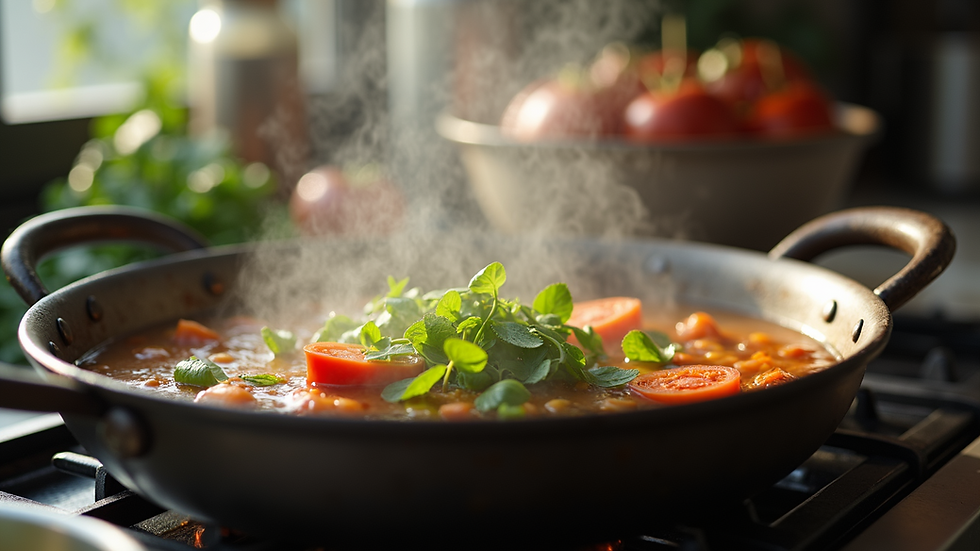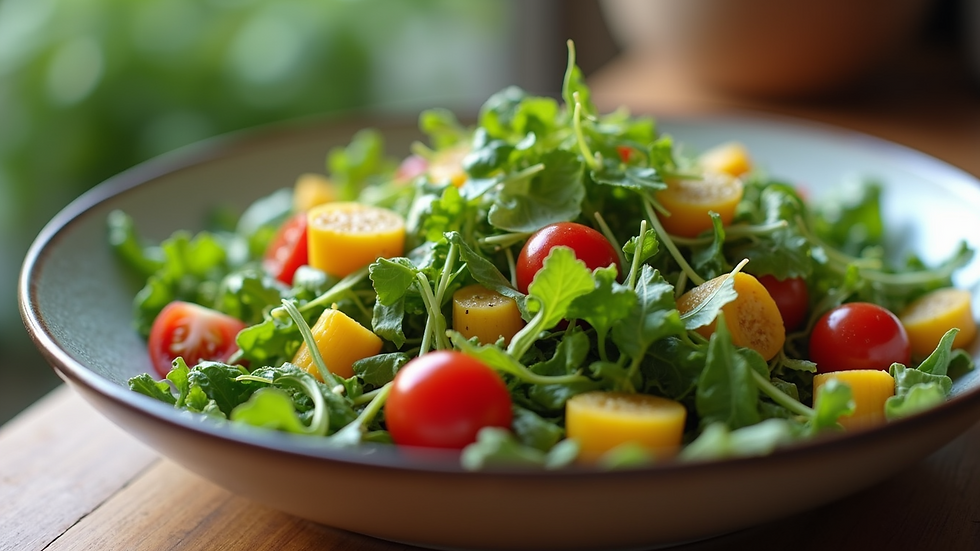Discover New Ways to Make Your Meals Healthier
- LKITCHEN

- Aug 18
- 4 min read
Eating well is essential for maintaining good health and feeling your best. However, making meals healthier does not always mean sacrificing flavor or spending hours in the kitchen. By adopting simple changes and exploring new techniques, you can transform your everyday dishes into nutritious and delicious meals. This article will guide you through practical tips and innovative ideas to make your meals healthier while keeping them enjoyable.
Embrace Fresh Ingredients for Better Nutrition
One of the easiest ways to improve the healthiness of your meals is to focus on fresh, whole ingredients. Fresh fruits, vegetables, lean proteins, and whole grains provide essential vitamins, minerals, and fiber that support overall wellness.
Choose seasonal produce: Seasonal fruits and vegetables are often fresher, tastier, and more affordable. For example, in spring, enjoy asparagus and strawberries; in fall, try pumpkins and apples.
Incorporate more plant-based foods: Adding beans, lentils, nuts, and seeds to your meals increases fiber and protein while reducing saturated fat intake.
Opt for whole grains: Swap refined grains like white rice and white bread for whole grains such as quinoa, brown rice, and whole wheat bread to boost fiber and nutrient content.
By prioritizing fresh ingredients, you lay a strong foundation for healthier meals that nourish your body.

How Healthy Cooking Can Transform Your Meals
Healthy cooking is not just about what you eat but also how you prepare your food. Using the right techniques can preserve nutrients, reduce unhealthy fats, and enhance flavors naturally.
For example, instead of frying foods in oil, try baking, steaming, or grilling. These methods use less fat and help retain vitamins and minerals. Additionally, seasoning with herbs and spices rather than salt can lower sodium intake while adding exciting flavors.
If you want to explore more about healthy cooking methods, there are many resources and recipes available that focus on nutritious preparation techniques. These methods encourage creativity in the kitchen and promote long-term healthy eating habits.

Which 7 Cooking Techniques Are the Healthiest and Why?
Understanding the healthiest cooking techniques can help you make better choices in the kitchen. Here are seven methods that stand out for preserving nutrients and minimizing unhealthy fats:
Steaming - Uses steam to cook food gently, preserving vitamins and minerals without adding fat.
Grilling - Cooks food quickly over direct heat, allowing excess fat to drip away.
Baking - Uses dry heat in an oven, requiring little or no added fat.
Poaching - Cooks food in simmering water or broth, keeping it moist and tender without added fat.
Sautéing - Uses a small amount of healthy oil over medium heat, preserving texture and flavor.
Roasting - Similar to baking but often at higher temperatures, enhancing flavor without excessive fat.
Blanching - Briefly boiling vegetables then plunging them into cold water to preserve color, texture, and nutrients.
Each of these techniques helps maintain the natural goodness of ingredients while reducing the need for unhealthy additives. Experimenting with these methods can make your meals both tasty and nutritious.

Simple Swaps to Make Your Favorite Recipes Healthier
You don’t have to give up your favorite dishes to eat healthier. Small ingredient swaps can make a big difference:
Use Greek yogurt instead of sour cream for creaminess with added protein.
Replace mayonnaise with mashed avocado for healthy fats and a creamy texture.
Choose whole wheat pasta instead of regular pasta to increase fiber intake.
Swap white sugar for natural sweeteners like honey or maple syrup in moderation.
Use olive oil or avocado oil instead of butter or vegetable oil for heart-healthy fats.
These swaps are easy to implement and can improve the nutritional profile of your meals without compromising taste.
Tips for Planning and Preparing Healthy Meals
Planning ahead is key to maintaining a healthy diet. Here are some practical tips to help you stay on track:
Meal prep in advance: Cook large batches of grains, proteins, and vegetables to mix and match throughout the week.
Keep healthy snacks on hand: Nuts, fruit, and cut veggies make great quick options.
Use portion control: Serve balanced portions of protein, carbs, and vegetables to avoid overeating.
Experiment with herbs and spices: They add flavor without extra calories or sodium.
Stay hydrated: Drink plenty of water to support digestion and overall health.
By organizing your meals and snacks, you reduce the temptation to reach for unhealthy options and make it easier to enjoy nutritious food every day.
Explore New Ingredients and Flavors
Trying new ingredients can make healthy eating exciting and enjoyable. Consider incorporating:
Ancient grains like farro, millet, or teff for variety and nutrition.
Exotic fruits and vegetables such as dragon fruit, kohlrabi, or jicama.
Fermented foods like kimchi, sauerkraut, or kefir to support gut health.
Fresh herbs like cilantro, basil, or mint to brighten dishes.
Exploring new flavors keeps your meals interesting and encourages a diverse nutrient intake.
Making Healthy Cooking a Lifestyle
Adopting healthier cooking habits is a journey, not a quick fix. Start by making small changes and gradually incorporating new techniques and ingredients. Celebrate your successes and learn from challenges.
Remember, healthy cooking is about balance and enjoyment. It’s possible to create meals that are both nourishing and delicious. By embracing fresh ingredients, using smart cooking methods, and experimenting with flavors, you can discover new ways to make your meals healthier every day.
Your body and taste buds will thank you.





Comments